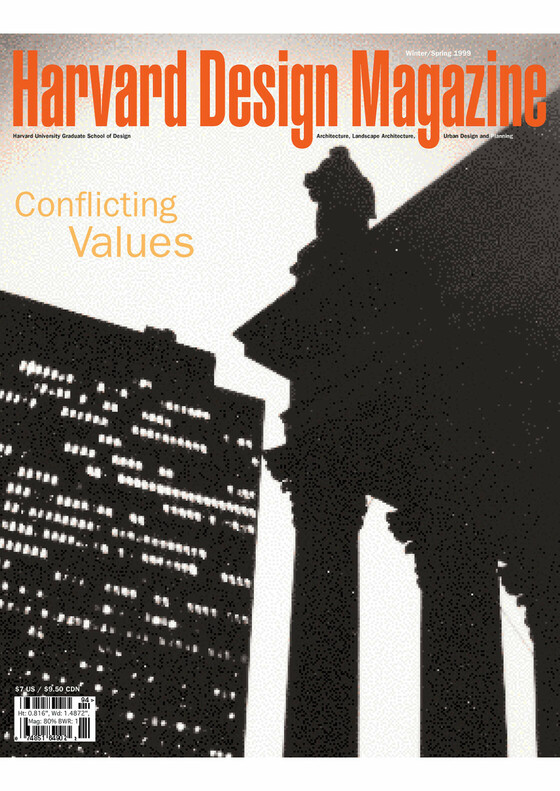Divided Highways by Tom Lewis
7: Conflicting Values

Readers sometimes ask: “How do you select the themes for the magazine?” A straightforward question with a complicated answer: the choice can be based upon the sense that a topic is timely, or neglected, or one of those perennially vexing issues requiring periodic discussion. The current theme, “conflicting values,” is the result of a more unusual process. It was selected, in a real sense, by our writers, for we began with a subtly different agenda: our earlier idea was not to explore how buildings embody value but rather to dissect the process of evaluation. How do we judge architecture, landscapes, cities? What criteria for judgment are implicit in the work of critics, historians, and essayists? What are the responsibilities of criticism? Given the broad acceptance of cultural relativism, can we agree on any normative standards by which to judge (or design) architecture and landscapes?
As this issue evolved, however, we found that few writers were eager to train their critical energies upon evaluative processes—to judge their own judgments, or those of others. But what they were eager to explore—or how they chose to interpret our questions—has illuminated a set of issues of equal power. How do buildings and places embody and preserve meaning and value? Who is qualified to judge design? What is the value of architecture in the larger culture?
— Nancy Levinson (excerpted from the introduction)
Camilo José Vergara
Mitchell Schwarzer
John Beardsley
Edward Dimendberg
William S. Saunders
Alice T. Friedman
Ron Witte
Michael Benedikt
Ken Smith
Roger Scruton
Kenneth Frampton
Juhani Pallasmaa
Brenda Case Scheer
Kurt W. Forster
Denise Scott Brown
Jan Otakar Fischer
Edward Dimendberg
Kenneth T. Jackson
Alona Nitzan-Shiftan
Edward Dimendberg
Graham Larkin
Jan Otakar Fischer
Andrew Herscher